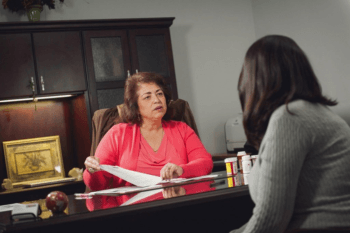Help With Rising Medication Costs

Sandra Garcia’s phone rings in her office for the second time in ten minutes. On the other end is yet another person who cannot afford next month’s supply of insulin, a lifesaving injectable for people living with diabetes. Rising prescription drug costs have spurred alarm in Garcia’s clientele, but she confidently assures she will do all she can to help.
As program coordinator of the Medication Assistance Program of the Texas A&M Health Science Center Coastal Bend Health Education Center (CBHEC), Garcia has assisted hundreds of uninsured and underinsured South Texas residents with obtaining their prescription medications – including insulin – at a low or no cost, despite rising prices caused by a number of recent changes in the pharmaceutical industry.
“We have seen more and more clients coming to us needing assistance with insulin,” she said. “Most of them don’t have insurance, but even some insurance does not cover insulin, and we can help those individuals, too.”
People who are considered underinsured have health benefits that do not adequately cover all of their medical expenses. For these people, some prescriptions may be covered while others are not, or they might have high out-of-pocket expenses. Unfortunately, many people don’t discover they are underinsured until an emergency occurs or they are faced with a serious illness, like diabetes, that requires prescriptions that are not covered by their insurance.
The cost for insulin without insurance coverage is anywhere from $200 to $500 per month and higher, depending on the amount an individual needs to keep his or her diabetes under control. This can be devastating for those whose income lies below federal poverty thresholds, but, according to the American Diabetes Association, poverty and type 2 diabetes are tightly linked.
Continue reading on Vital Record.
This article by Lindsey Hendrix originally appeared in Vital Record.





